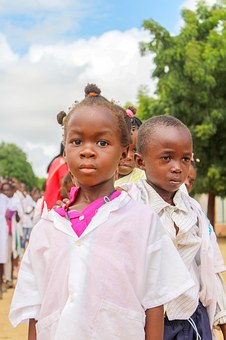Children With Allergies--3 Frequent Allergies That Affect Children

An allergy attack is scary at any age
An allergy attack is scary at any age. But for parents of young children it can be even more frightening because the child may not be able to tell you what's happening. Knowing the symptoms, and watching for behaviors that indicate discomfort or trouble can save anxiety, and more importantly your child's life.Here are 3 of the most common types of allergies that affect children, their symptoms, and some suggestions that will help.
Food-25% of children age 5 and under suffer from food allergies in the U. S. and that number has risen more than 15% since the late 1990s. Food allergies affect both boys and girls with African American boys being most at risk. Unfortunately, children with food allergies are more likely to develop other related health issues as your child grows older.
Common products that affect children are peanuts and nuts to the point that many schools are now peanut-free, and peanut products are prohibited in many schools to avoid any chance that an allergic child might be affected. Soy and dairy products, seafood, and wheat are also high on the list of allergens.
The best way to prevent a reaction is to avoid the foods. But this is often easier said than done. Read food labels carefully. Avoid products that are manufactured in the same plant, or with shared equipment of a food to which your child is allergic.
Inform others of their allergies-- at school, day care, on play dates, at church. As your child gets older be sure to explain the importance of letting others know what they can and cannot eat.
Allergy shots or allergen immunology can help decrease sensitivity to various allergens over time. Consult with your child's allergist to see if this is an option. And most importantly, always have a plan in place for emergencies. It could very well save your child's life.
Contact Dermatitis-This is skin reaction that is generally precipitated by contact with natural or man made substances in insecticides, household chemicals, laundry detergents, fragrances, and synthetic fabrics in clothing and bedding to name only a few. Symptoms include red, swollen and/or itchy skin, wheels, and whelps. It is generally located specifically at the point of contact, and usually resolves when the irritant is removed.
To reduce flare ups use organic fabrics for clothing and bedding, wash clothing and bedding before your child uses them, and use a detergent such as Dreft that is gentle on young skin.
Airborne-Allergens that are airborne can be found both inside and outside. Outdoor allergens can be seasonal and include a variety of pollens, mold, and mildew spores. The good news is that once the season for the allergen passes, the symptoms often leave as well.
Take your cue from your child's pediatrician. If they suggest that you see an allergist, this is an excellent way to create a management plan that will make your child's life more normal. It may include medication, and an Epipen (a pre-packaged, ready to inject dose of epinephrine) for emergencies. Be sure to follow the plan, and make others aware of the plan include teachers, substitute teachers, bus drivers, and all other who interact with your child.
Indoor allergens are a constant and include things such as dust, dust, mites and pet dander. These can only be eliminated with constant filtration. Constant attention to these will provide the best chance for relief.
Some non-invasive solutions include washing bed linen weekly in water 140 degrees Fahrenheit or hotter to reduce the dust mite population, removing carpets that make it easy for allergens to hide and difficult for you to eliminate them, and using a high efficiency particle arresting (or HEPA) air purifier to remove airborne dust, mold and mildew spores, and other common indoor allergens.
by: Debbie Davis Top 5 Outstanding iPad eBooks for Kids Beat The Clock To A Clean Kids Bedroom How To Be A Brisbane Kids Entertainer & Magician Guilt Parenting - How To Raise Insecure Kids Child Behavior - Tips For Parents Lose Fifteen Pounds In Five Weeks For Free Attractive Youth Bedroom Collections for your Teen Helping Children Cope With Pet Loss - 3 Tips To Help Infants And Children Up To Three Years Helping Your Child Cope With Pet Loss - 3 Tips To Help Children Ages 2-6 Teenage Acne Treatment - Teen Acne Causes And Information Raising Children..."the Path Of Least Resistance" How You Can Realistically Lose Fifteen Pounds Child Custody: Keeping The Peace For Your Child's Sake